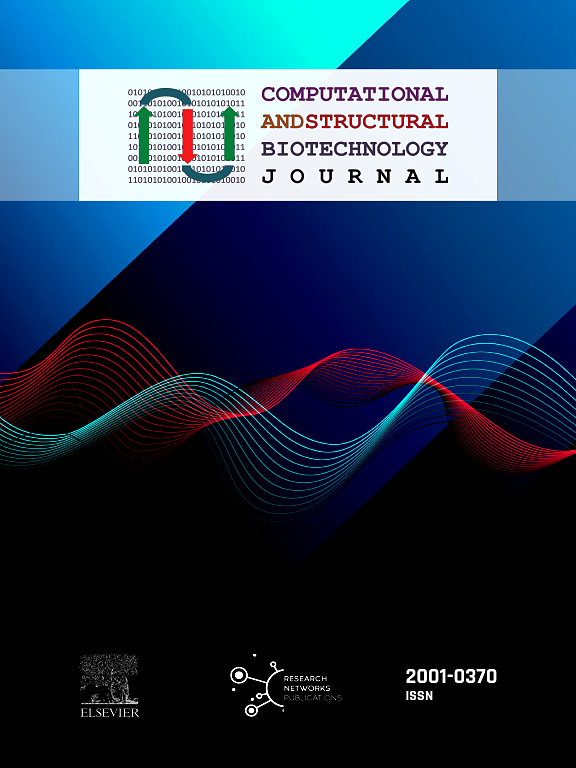A systematic review on the state-of-the-art and research gaps regarding inorganic and carbon-based multicomponent and high-aspect ratio nanomaterials
IF 4.4
2区 生物学
Q2 BIOCHEMISTRY & MOLECULAR BIOLOGY
Computational and structural biotechnology journal
Pub Date : 2024-10-19
DOI:10.1016/j.csbj.2024.10.020
引用次数: 0
Abstract
This review explores the state-of-the-art with respect to multicomponent nanomaterials (MCNMs) and high aspect ratio nanomaterials (HARNs), with a focus on their physicochemical characterisation, applications, and hazard, fate, and risk assessment. Utilising the PRISMA approach, this study investigates specific MCNMs including cerium-zirconium mixtures (CexZryO2) and ZnO nanomaterials doped with transition metals and rare earth elements, as well as Titanium Carbide (TiC) nanomaterials contained in Ti-6Al-4V alloy powders. HARNs of interest include graphene, carbon-derived nanotubes (CNTs), and metallic nanowires, specifically Ag-based nanowires. The review reveals a significant shift in research and innovation (R&I) efforts towards these advanced nanomaterials due to their unique properties and functionalities that promise enhanced performance across various applications including photocatalysis, antibacterial and biomedical uses, and advanced manufacturing. Despite the commercial potential of MCNMs and HARNs, the review identifies critical gaps in our understanding of their environmental fate and transformations upon exposure to new environments, and their potential adverse effects on organisms and the environment. The findings underscore the necessity for further research focused on the environmental transformations and toxicological profiles of these nanomaterials to inform Safe and Sustainable by Design (SSbD) strategies. This review contributes to the body of knowledge by cataloguing current research, identifying research gaps, and highlighting future directions for the development of MCNMs and HARNs, facilitating their safe and effective integration into industry.

系统回顾无机和碳基多成分高pect ratio 纳米材料的最新进展和研究空白
本综述探讨了多组分纳米材料(MCNMs)和高纵横比纳米材料(HARNs)的最新进展,重点是其物理化学特性、应用以及危害、归宿和风险评估。利用 PRISMA 方法,本研究调查了特定的 MCNMs,包括铈锆混合物(CexZryO2)和掺杂过渡金属和稀土元素的 ZnO 纳米材料,以及 Ti-6Al-4V 合金粉末中的碳化钛 (TiC) 纳米材料。值得关注的 HARNs 包括石墨烯、碳衍生纳米管 (CNT) 和金属纳米线,特别是银基纳米线。综述显示,研究与创新(R&I)工作正朝着这些先进纳米材料的方向发生重大转变,因为它们具有独特的性质和功能,有望在光催化、抗菌和生物医学用途以及先进制造等各种应用中提高性能。尽管 MCNMs 和 HARNs 具有巨大的商业潜力,但本综述指出了我们对其环境归宿、暴露于新环境后的转化及其对生物和环境的潜在不利影响的认识存在重大差距。研究结果强调了进一步研究这些纳米材料的环境转化和毒理学特征的必要性,以便为安全和可持续设计 (SSbD) 战略提供信息。本综述通过对当前研究进行编目、确定研究空白点以及强调 MCNMs 和 HARNs 的未来发展方向,促进其安全有效地融入工业领域,从而为知识体系做出贡献。
本文章由计算机程序翻译,如有差异,请以英文原文为准。
求助全文
约1分钟内获得全文
求助全文
来源期刊

Computational and structural biotechnology journal
Biochemistry, Genetics and Molecular Biology-Biophysics
CiteScore
9.30
自引率
3.30%
发文量
540
审稿时长
6 weeks
期刊介绍:
Computational and Structural Biotechnology Journal (CSBJ) is an online gold open access journal publishing research articles and reviews after full peer review. All articles are published, without barriers to access, immediately upon acceptance. The journal places a strong emphasis on functional and mechanistic understanding of how molecular components in a biological process work together through the application of computational methods. Structural data may provide such insights, but they are not a pre-requisite for publication in the journal. Specific areas of interest include, but are not limited to:
Structure and function of proteins, nucleic acids and other macromolecules
Structure and function of multi-component complexes
Protein folding, processing and degradation
Enzymology
Computational and structural studies of plant systems
Microbial Informatics
Genomics
Proteomics
Metabolomics
Algorithms and Hypothesis in Bioinformatics
Mathematical and Theoretical Biology
Computational Chemistry and Drug Discovery
Microscopy and Molecular Imaging
Nanotechnology
Systems and Synthetic Biology
 求助内容:
求助内容: 应助结果提醒方式:
应助结果提醒方式:


